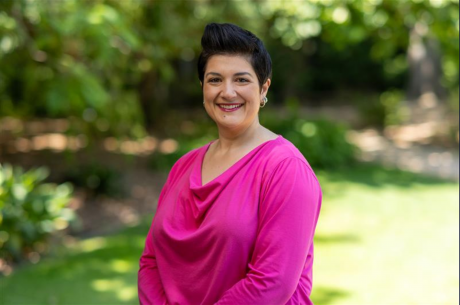Published today in Science Advances, the study used fluorescent proteins derived from jellyfish and sea anemones to ‘paint a picture’ of how breast cancer cells adapt and colonise other tissues, in particular the liver and lungs.
Postdoctoral Research Fellow at the Olivia Newton-John Cancer Research Institute and La Trobe University’s School of Cancer Medicine, Dr Jean Berthelet, said understanding how cancer cells travel to, and survive in, distant organs, is critical to the development of effective cancer treatments.
“Because the survival rate of breast cancer patients plummets when cancer cells move out of the breast and into vital organs, it’s essential that we have a deep understanding of this process.
“By colouring these specific breast cancer cells, and tracking their movements, we’ve been able to explore the pathways they take, and how the cells adapted to, and colonised, their new homes,” Dr Berthelet said.
Laboratory Head at the Olivia Newton-John Cancer Research Institute and La Trobe University’s School of Cancer Medicine, Dr Delphine Merino, said the research also revealed how the cells’ new home strongly impacted their behaviour.
“We found that when cancer cells metastasise, they can cluster together as multi-coloured groups, especially in lung metastases, and their genetic profile changes,” said Dr Merino.
Using this knowledge, the researchers identified two drugs that had an impact on the behaviour or survival of cancer cells in these metastatic sites – including one, a drug used for the treatment of auto-immune diseases, that can break up cancer-cell groups in the lungs.
Dr Berthelet and Dr Merino led this preclinical study in collaboration with Dr Verena Wimmer and Dr Kelly Rogers from the Walter and Eliza Hall Institute, and Professor Frederic Hollande from the University of Melbourne.
Researchers used fluorescent proteins derived from jellyfish and sea anemones to tag individual Triple Negative Breast Cancer (TNBC) cells with one of 31 different colours.
This strategy, called LeGO, enabled them to track the fate of each cell: its movement, the number of ‘offspring’ it produced and its ability to cluster with one of the other 30 coloured cells in the metastases.
They then used genetic sequencing to examine the genetic difference between the same-coloured cancer cells in the primary tumour, the lung metastases and liver metastases.
Breast cancer tumours are composed of cells that are genetically different from each other. Some cells have the ability to spread and grow in other vital organs, often many years after the primary tumours appear.
TNBC patients have a higher risk of cancer relapses, including metastases in the liver, lungs, bones and brain. Treatment is often limited to radiotherapy and chemotherapy.
“We are very grateful to the patients who donated precious samples to cancer research, and we are hoping that some of these results could be used to find better therapeutic strategies for patients with aggressive breast tumours and metastases,” Dr Merino said.
The Susan G. Komen foundation, Cancer Australia, the Australian National Breast Cancer Foundation, the Love your sister Foundation and Cancer Council Victoria supported this study.
About the Olivia Newton-John Cancer Research Institute
The Olivia Newton-John Cancer Research Institute is a leader in the development of experimental and breakthrough cancer treatments. We investigate and develop treatments for cancers of the breast, bowel, lung, melanoma, prostate, liver, gastrointestinal tract and brain. Our researchers and clinicians are running more than 94 clinical trials, giving 850 patients access to potential new treatments including immunotherapies and personalised medicine.
About the La Trobe School of Cancer Medicine
The La Trobe University School of Cancer Medicine is embedded in the Olivia Newton-John Cancer Research Institute, where researchers and clinicians work together to make new scientific discoveries and translate them into new treatments for the benefit of cancer patients. The School's significant contributions to basic discovery, translational research and clinical trials are enhanced through strong collaborative research and joint research training with scientists at the La Trobe Institute of Molecular Science.
Image: Breast cancer cells labelled with LeGO optical tags.
Media Contacts:
Kim Tsai (ONJCRI): kim.tsai@onjcri.org.au, 0411 742 221
Kate O'Connor (La Trobe): k.o'connor@latrobe.edu.au, 0436 189 629


